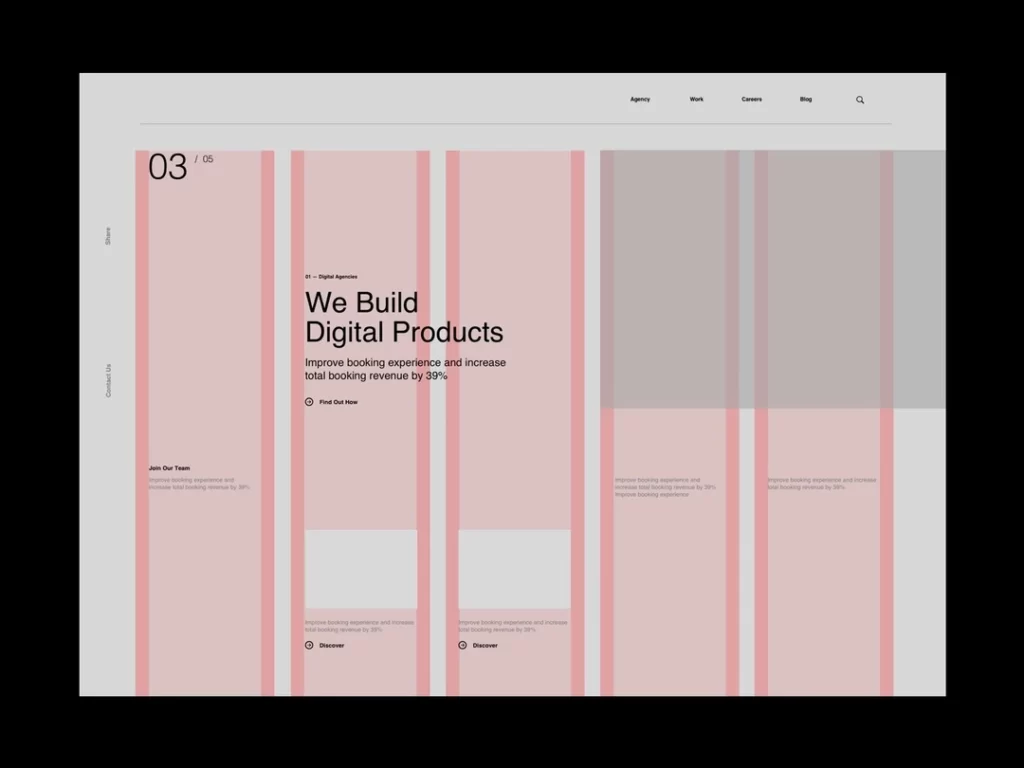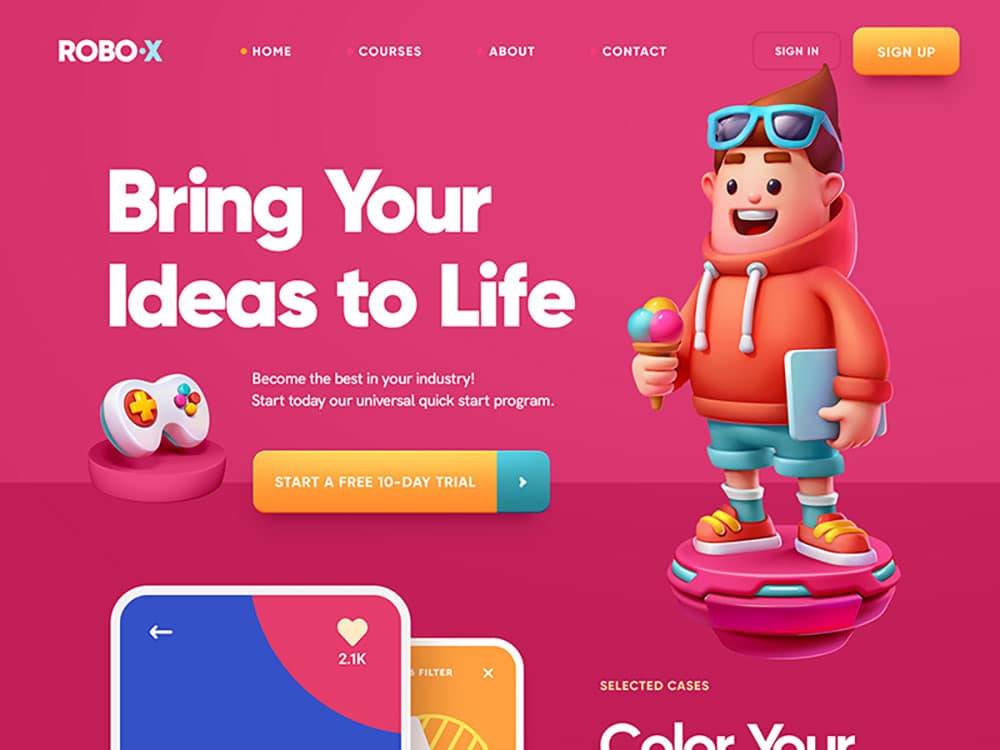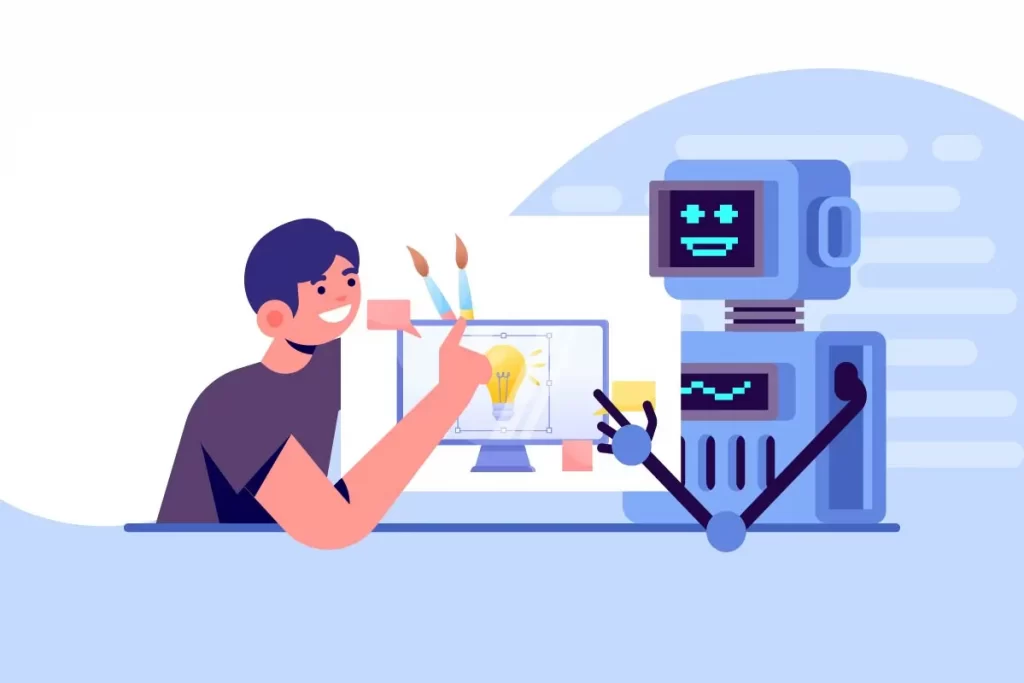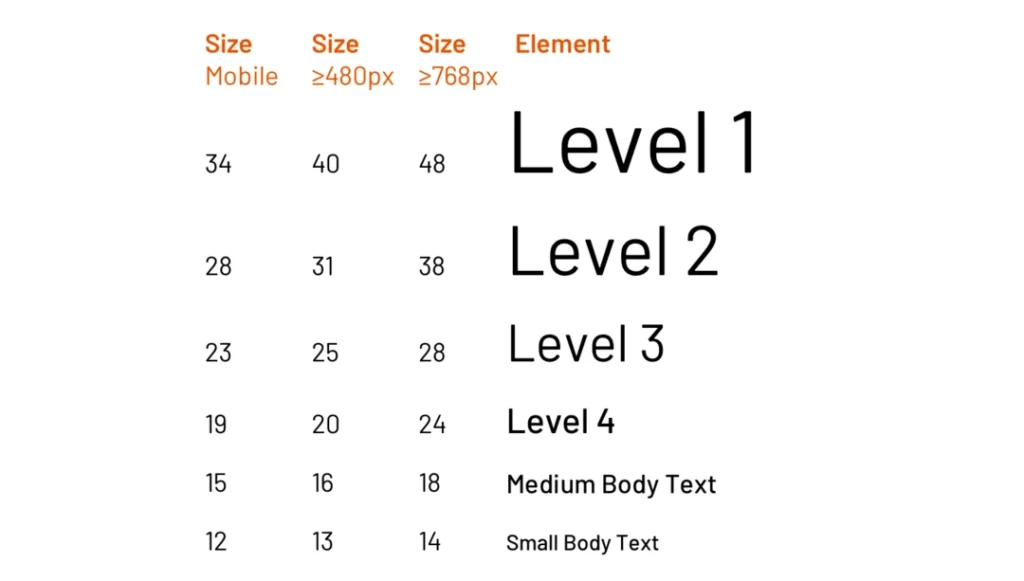Top 5 Innovative Web Design Trends to Follow
Navigating the digital realm where aesthetics and usability intersect demands knowledge of current web design trends. The world of web design is ever-fluid, moulded continuously by tech advances and shifting user preferences. As we look forward to 2023, it's crucial to anticipate the trends shaping the web design landscape. This article delves into the emerging web design trends set to take the digital world by storm.
Table of Contents
The Importance of Innovative Web Design

Every web design agency knows that web design is not merely about creating an online presence; it's an instrumental tool for branding and establishing a unique identity. A well-designed website translates a company's values into a visual narrative, making it a powerful branding apparatus. Moreover, web design is integral to user experience (UX), shaping how visitors interact with a website. Whether it's seamless navigation, intuitive layout, or appealing aesthetics, web design significantly influences user satisfaction.
The importance of web design innovation cannot be overstated; it significantly boosts user interaction and fulfilment. Cutting-edge designs hold the power to trap users, fuel engagement, and incite exploration. In an era where attention spans are shorter than ever, a creative web design can be the difference between a visitor staying on your page or leaving prematurely.
Top Web Design Trends for 2023
As we look forward to 2023, key trends are poised to shape the web design landscape.
Dark Mode Design

Dark mode design has evolved from simply being an alternative visual choice to becoming the preferred interface aesthetic for many digital users today. Major technology companies like Facebook, Instagram, Twitter, and Apple have embraced and adopted this shift towards darker themes in recent years. The rise of dark mode signifies deeper motivations and benefits beyond offering a novel or trendy visual change.
The functional appeal of dark mode centres on its ability to provide a more comfortable viewing experience, especially in low-light environments. By swapping bright whites and vivid colours for dark backgrounds and muted tones, dark mode aims to soothe users' eyes that may strain from glare on glowing screens. Reduced blue light emission can assist with nighttime usage and accessibility. Dark mode helps create a more seamless experience when transitioning from well-lit surroundings to the glow of a screen in a dark room.
Beyond improving eye comfort, the natural beauty of dark mode design lies in its capacity to make key elements stand out through strategic contrast. Vibrant colours, buttons, headlines and visuals pop against dark backgrounds, immediately grabbing attention. Crisp white typography and icons draw focus, aiding legibility and scanning. Dark mode enhances the visibility of critical UI features and directs the viewer's gaze towards essential on-screen information.
Subtle gradients, moody colour schemes, and elegant black interfaces lend dark mode an inherent aesthetic appeal. It evokes feelings of sophistication and sleekness when done thoughtfully. Brands can craft distinct dark-mode themes that align with their identities. As consumers increasingly seek personalised and customisable experiences, dark mode presents opportunities to meet users' diverse visual preferences.
Overall, dark mode design signifies the digital experience becoming more responsive to human needs. It caters to ergonomic and visual demands shaped by our usage contexts and environments. Beyond a passing trend, dark mode heralds an interface paradigm focused on accessibility, usability and putting the user experience first.
Minimalistic Design

The minimalist design philosophy of “less is more” continues to gain momentum in the world of web design as we head into 2023. This trend toward simplicity and decluttering interfaces will only become more prominent over the next year.
Minimalist web design strips away all non-essential elements, aiming to spotlight core content and functionality in a clean, uncluttered interface. Every component has a purpose – if it doesn't add value, it gets cut. This creates an intuitive, user-friendly experience where navigation and workflows feel seamless.
Visually, minimalist sites are marked by ample white space, crisp typography, flat graphics, and a limited colour palette. Layouts are structured into geometric blocks and sections. Whitespace takes centre stage, giving breathing room to direct attention. Photography and illustrations are impactful yet sparse.
The reasons for minimalism's rising popularity extend far beyond aesthetics alone. The pared-down approach carries tangible user experience benefits:
- Faster load times: By simplifying page architecture and limiting bloat, minimalist sites put less strain on servers and connection speeds. Visitors can access content faster.
- Improved scannability: Well-spaced, uncluttered layouts make scanning and extracting information more accessible for users. Key content elements get spotlighted.
- Better mobility optimisation: The stripped-down presentation adapts seamlessly across devices with fewer points of failure.
- Enhanced accessibility: Simple interfaces follow best practices for legibility and navigation, accommodating users with disabilities.
- Refined UX: Thoughtful reduction of on-screen elements encourages more intuitive interactions. Every touchpoint leads users closer to their goals.
- Long-term maintainability: With less presentational clutter, sites remain nimble and flexible as needs evolve. New features integrate cleanly.
- Optimised for SEO: Search engines favour faster loading, mobile-friendly sites with easy crawlability. Minimalist design checks all those boxes.
So while the aesthetic appeal of minimalism is undeniable, its growth is very much user-driven. As our digital world grows increasingly complex, minimalism promises relief. By 2023, expect minimalist design to become standard rather than an exception. When executed thoughtfully, simplicity can be compelling.
Immersive 3D Elements

Technological advancements have recently brought 3D components to the forefront of website design. When properly integrated, 3D visual elements can enhance user engagement by providing an immersive, multidimensional online experience. The JavaScript library Three.js has become integral to this movement by empowering developers to create stunning interactive 3D graphics directly within a web browser.
Compared to static 2D images, adding 3D visuals and animations can make website interactions feel more dynamic, vivid and lifelike. As we move through 2023 and beyond, we can expect the use of interactive 3D on websites to continue rising as developers recognise its potential to transport and immerse visitors.
Some key benefits of leveraging Three.js include the following:
- Enhanced graphical capabilities – Three.js removes browser constraints and expands the possibilities for 3D graphics and animations on the web. Developers can showcase objects and environments with greater depth, perspective and smoother motions.
- User engagement – Research shows interactive 3D content holds visitor attention for longer, leading to greater engagement. The immersive experience feels more stimulating.
- Storytelling – 3D visuals help convey stories and ideas in more resonant ways. Complex data and processes can be better explained through 3D models and animations.
- Novel navigation – Three.js enables new navigation methods like virtual tours, 3D product configurators and manipulable objects. This provides users with interactive control over their experience.
As adoption spreads, we'll see 3D integration powering more immersive websites across retail, education, healthcare and gaming industries. The creative possibilities are vast. With the power of Three.js, developers now have the tools to transport and immerse visitors in their website experience like never before.
AI and Bots

Incorporating artificial intelligence (AI) into web design and development has accelerated rapidly in recent years, paving an innovative path forward. AI-powered chatbots, virtual assistants, and other tools have become increasingly advanced, able to handle intricate customer questions, guide users seamlessly through website navigation, and deliver personalised experiences tailored to each visitor.
These AI assistants are an instant, always-available support system for resolving user queries and issues. By implementing AI capabilities into their web platforms, businesses are seeing dramatic improvements in user engagement, customer satisfaction, and overall user experience.
AI represents a monumental shift in digital customer interactions and online customer service. Instead of contacting a human representative or searching through FAQ lists, visitors can chat with a virtual assistant that can understand requests and respond with helpful information in natural language. These conversational AI chatbots can answer questions, recommend products, provide support, and mimic human-like conversation.
As AI algorithms evolve, virtual assistants are becoming more lifelike in their interactions. Advanced deep learning techniques allow chatbots to comprehend complex questions across various topics and respond appropriately based on the context. And with access to vast training datasets, the assistants continue to expand their knowledge and improve their conversation abilities.
Web designers are finding new ways to seamlessly integrate these AI tools into sites and apps to boost user engagement. For example, virtual assistants may proactively engage visitors via pop-up chats, providing helpful tips or recommendations based on current site behaviour. Or they may monitor shopping carts and assist with product questions or upselling opportunities.
AI is ushering in a new era of intelligent websites that understand and cater to each user's needs and preferences. As the technology improves, businesses realise game-changing benefits, including better lead generation and conversions, reduced support costs, and optimised user experiences. The rapid adoption of AI signals an exciting future in which virtual assistants become indispensable in crafting personalised, frictionless journeys for each customer.
The Role of VR and AR in Web Design
The digital sphere transcends the flatland; we're journeying towards immersive, interactive, and innovative web experiences. VR and AR are the key game-changers, progressively transforming the canvas of web design. They offer an unprecedented level of immersion that transforms the user's experience from mere browsing to interaction and engagement.
Consider, for example, the shopping experiences powered by AR. Pioneers like IKEA are paving the way by allowing customers to visualise furniture within their homes before purchasing. Similarly, online fashion stores implement AR to facilitate a virtual dressing room experience. This level of interactivity, facilitated by AR, leads to more engaging experiences and more intelligent purchasing decisions.
In VR, we see applications like virtual tours for real estate websites. Potential buyers or leaseholders can virtually tour properties with a comprehensive, 360-degree perspective. By breaking down geographical barriers, VR enhances user experience and widens the customer base.
The Rise of Responsive Design

In the smart era, where various devices offer web access, browsing isn't limited to desktops. The internet is now accessed via multiple devices, each boasting distinct screen dimensions and resolutions. Responsive design has swiftly evolved from being viewed as a non-essential luxury to an absolute requirement.
In responsive design, a website's layout dynamically alters according to the user's device, ensuring a uniform and superior viewing experience on all platforms. Whether a visitor uses a laptop, tablet, or smartphone, your site should present an impeccable look and flawless functionality.
Analysing the statistics, mobile devices are responsible for most global internet traffic, accounting for over half as we move through 2023. In this mobile-dominant world, businesses must pay attention to responsive design. Unable mobile-friendly websites tend to suffer regarding user engagement and search engine rankings. Responsive design has transcended the luxury status and is now a requisite for all web interfaces.
Conclusion
As we anticipate 2023, it's evident that the web design landscape is geared toward more immersive, interactive, and user-friendly experiences. Trends such as dark mode, minimalism, 3D elements, AI integration, VR and AR applications, and responsive design are shaping this landscape.
Keeping up with these trends is about more than staying current for businesses. The goal is to augment their brand identity, captivate their audience, and maintain their competitive edge in an overwhelmingly digital landscape. After all, in web design, just as in life, stagnation equates to regression. Let's welcome these trends, envisioning their evolution in 2023 and beyond as we shatter the status quo and redefine web design parameters.
Author Bio: Ciaran Stone is the CEO of Square Root Solutions, – Well-known app developer in Ireland that help businesses, entrepreneurs, and startups transmute their app development ideas into actual mobile applications. Ciaran writes an article on app development and IT development in his spare time.
